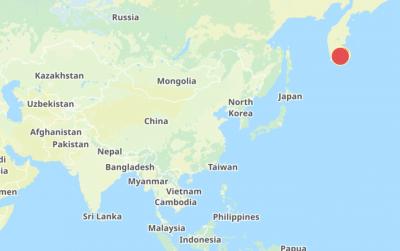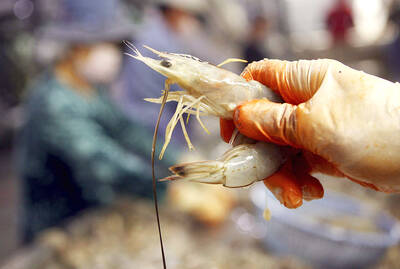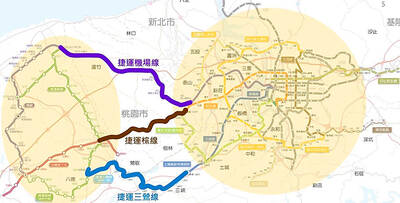Academics and government officials worked with indigenous people to release the Dictionary of Nanshih Amis Language (南勢阿美辭典) on Saturday last week, a four-decade work by Catholic priest Father Kucia Putal, who ministers to parishioners in Hualien County’s rural townships.
Putal, whose Chinese name is Tseng Chun-yuan (曾俊源), said he has long felt the need to study the language spoken by the Amis people in northern Hualien and compile a dictionary for it.
“Most Taiwanese indigenous groups have their own dictionary, but Nanshih Amis did not have one yet. So I spent about 40 years researching, recording and compiling its language for this book launch today,” Putal said.

Photo: CNA
The Amis people in Taiwan’s eastern region are the most populous among the nation’s 16 officially recognized indigenous groups and the most widely distributed, from lowland plains (east of the Central Mountain Range) to coastal areas (south of the Liwu River, 立霧溪), according to information from the Council of Indigenous Peoples (CIP).
They are categorized into three major groups — north (Nanshih), central and south, and each have their own culture and linguistic differences, he said.
Nanshih Amis people mainly live in Hualien’s northern regions, such as Hualien City, and the townships of Sincheng (新城), Jian (吉安), Shoufong (壽豐) and Fonglin (鳳林), Putal said, adding that their language is considered a regional dialect of the main Amis language.
“While serving parishioners in Hualien, I found they have language books and dictionaries for Amis and its language families, but it was lacking for the Nanshih Amis people,” he said.
“I felt the need to study it. I started by translating the Bible, religious hymns and the Psalms into the Nanshih language,” Putal said.
“Once I started, the mission of preserving the language fell on my shoulders. It took four decades of persistent effort to complete this work. Today, we are officially launching this dictionary, after receiving support from family members and government officials,” he said.
“Spoken and written language is the bridge linking us to our ancestors. This dictionary is the result of decades of field work and engaging with Amis people,” Putal said.
“We hope this dictionary would make it easier for Nanshih Amis to learn their mother tongue, encourage them to use and speak Amis languages and help them return to the roots of their culture,” he said.
The dictionary has more than 1,000 pages and contains Nanshih Amis vocabulary, sentence structures and grammar rules. It also has words and sentences translated into Mandarin Chinese, and examples of how to use them in daily life.
Amis linguist and teacher Lahok Valah (林震東) was its main editor.
“Language is a fundamental part of culture and should be passed on to the next generation. We very much appreciate the many decades of diligent work by Father Kucia Putal for his dedication in recording, compiling and researching this Amis language,” Hualien Mayor Wei Chia-yen (魏嘉彥) said.
“Through his efforts, he enabled this mother tongue, which was at risk of erosion and loss, to have a chance to be revived and taught in school,” he added.

“China is preparing to invade Taiwan,” Deputy Minister of Foreign Affairs Francois Wu (吳志中) said in an exclusive interview with British media channel Sky News for a special report titled, “Is Taiwan ready for a Chinese invasion?” the Ministry of Foreign Affairs said today in a statement. The 25-minute-long special report by Helen Ann-Smith released yesterday saw Sky News travel to Penghu, Taoyuan and Taipei to discuss the possibility of a Chinese invasion and how Taiwan is preparing for an attack. The film observed emergency response drills, interviewed baseball fans at the Taipei Dome on their views of US President

The Central Weather Administration (CWA) today issued a "tsunami watch" alert after a magnitude 8.7 earthquake struck off the Kamchatka Peninsula in northeastern Russia earlier in the morning. The quake struck off the east coast of the Kamchatka Peninsula at 7:25am (Taiwan time) at a depth of about 19km, the CWA said, citing figures from the Pacific Tsunami Warning Center. The CWA's Seismological Center said preliminary assessments indicate that a tsunami could reach Taiwan's coastal areas by 1:18pm today. The CWA urged residents along the coast to stay alert and take necessary precautions as waves as high as 1m could hit the southeastern

ECONOMIC BENEFITS: The imports from Belize would replace those from Honduras, whose shrimp exports have dropped 67 percent since cutting ties in 2023 Maintaining ties with Taiwan has economic benefits, Ministry of Foreign Affairs officials said yesterday, citing the approval of frozen whiteleg shrimp imports from Belize by the Food and Drug Administration (FDA) as an example. The FDA on Wednesday approved the tariff-free imports from Belize after the whiteleg shrimp passed the Systematic Inspection of Imported Food, which would continue to boost mutual trade, the ministry said. Taiwan’s annual consumption of whiteleg shrimps stands at 30,000 tonnes, far exceeding domestic production, the ministry said. Taiwan used to fill the gap by importing shrimps from Honduras, but purchases slumped after Tegucigalpa severed diplomatic ties with Taiwan

The Executive Yuan yesterday approved a southwestern extension of the Sanying MRT Line from New Taipei to Bade District (八德) in Taoyuan, with a goal of starting construction by late 2026. The 4.03-kilometer extension, featuring three new stations, will run from the current terminus at Yingtao Fude Station (LB12) in New Taipei City to Dannan Station (LB14), where it will connect with Taoyuan’s Green Line, New Taipei City Metro Corp said in a statement. This extension will follow the completion of core Sanying Line, a 14.29-kilometer medium-capacity system linking Tucheng (土城), Sansia (三峽)